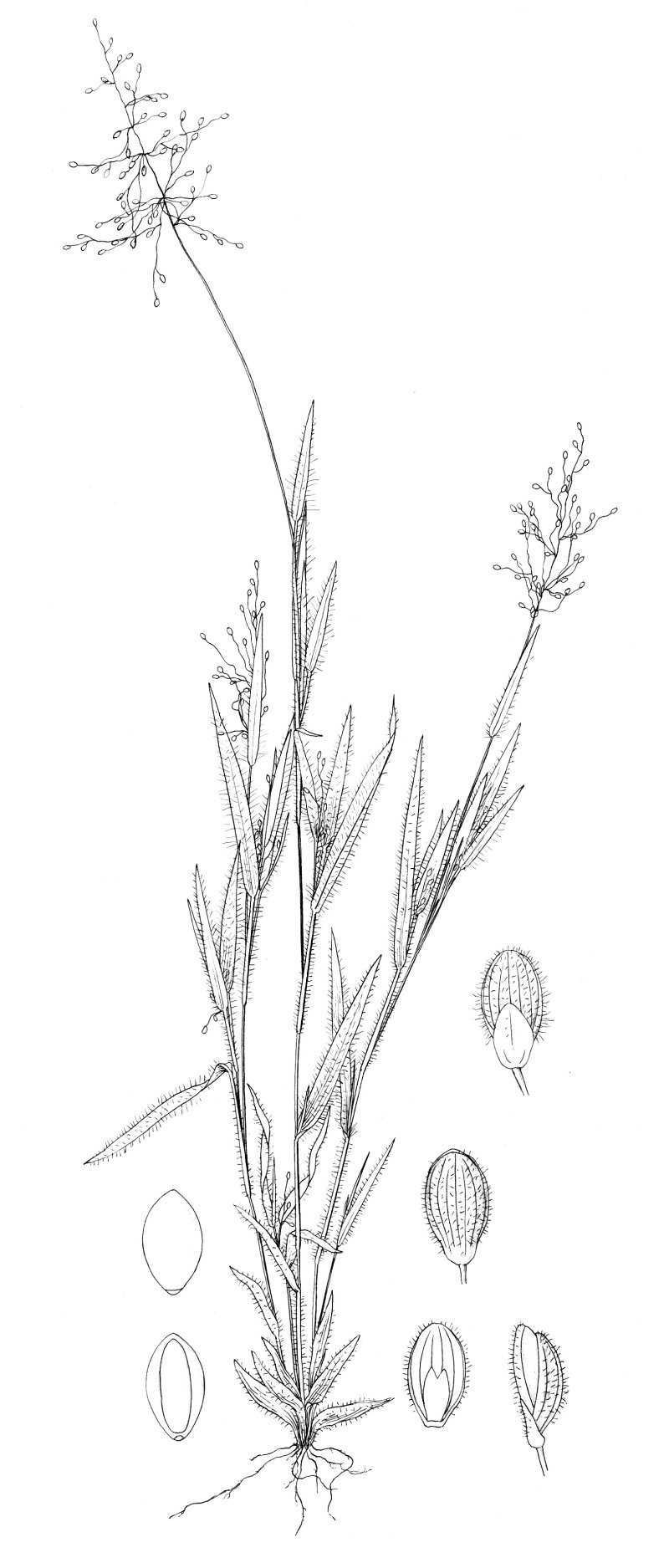
Dichanthelium acuminatum var. villosum Nash. Hairy Dichanthelium Habit: Densely tufted perennial. Vernal form: Light olive green. Culms: Slender 25-45 cm. tall, erect or ascending, densely tufted, pilose with long horizontally-spreading hairs, 3 mm. long. Blades: Firm, ascending, often subinvolute towards the end, 5-10 cm. long, 5-10 mm. wide, pilose on both sides, hairs of the upper surface appressed, long and less copious. Sheaths: Long-hairy (pilose). Ligule: 4-5 mm. long. Inflorescence: Panicles 4-8 cm. long, about as wide, short-exserted, loosely flowered, axis sparsely pilose, branches stiffly ascending or spreading. Spikelets: Long-pedicelled, oblong-elliptic, obtuse or pointed, papillose-pubescent with spreading hairs, 2.2-2.3 mm. long, about 1.1 mm. wide. Glumes: First one third to one half as long as the spikelet, the second glume and sterile lemma subequal, pilose, scarcely as long as the subacute fruit. Fertile lemmas: Shorter and more obtuse than the glumes, chartaceous, glabrous and shining, nerves obsolete at length indurated, margin inrolled, enclosing a palea. Fruit: 1.9 mm. long, 1 mm. wide, elliptic, subacute, grain free within the rigid firmly closed lemma and palea. Autumnal form: At first decumbent, often with geniculate nodes and arched internodes, the first branches appearing at about the maturity of the primary panicle, late in the season prostrate, the leaves of the fascicled branches appressed, giving a combed out appearance, conspicuous in the field, blades not greatly reduced, often with only a few hairs on the upper surface, overtopping the much reduced panicles; winter rosettes appearing rather early, blades long, bluish-green, densely pilose. Habitat: Sandy or poor soil, open woods and hillsides. June-August. Kansas Range: Saline county.